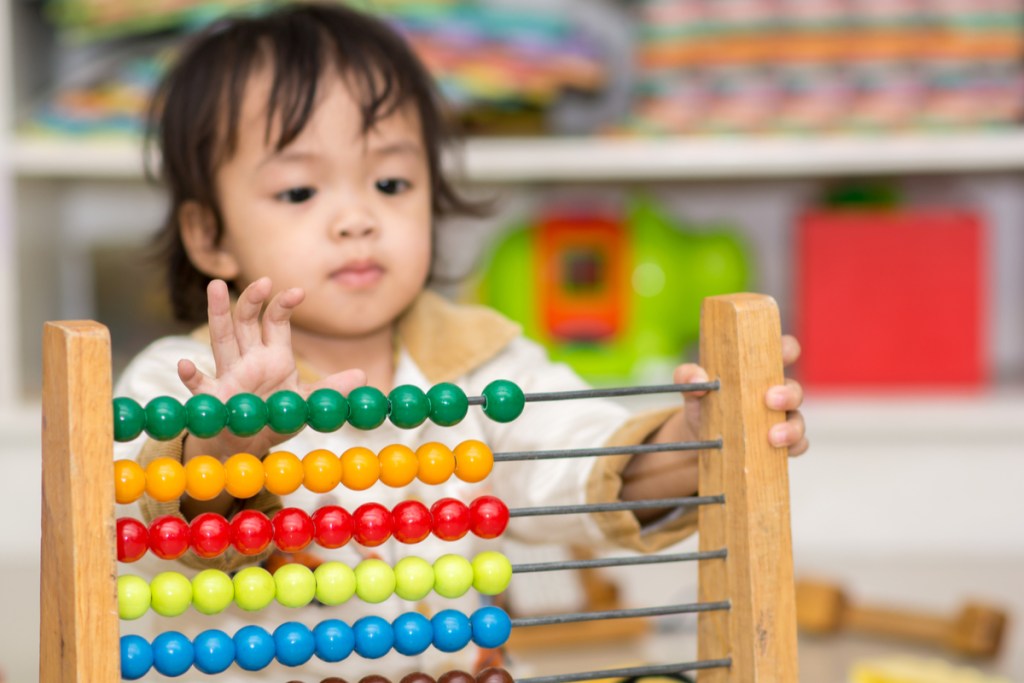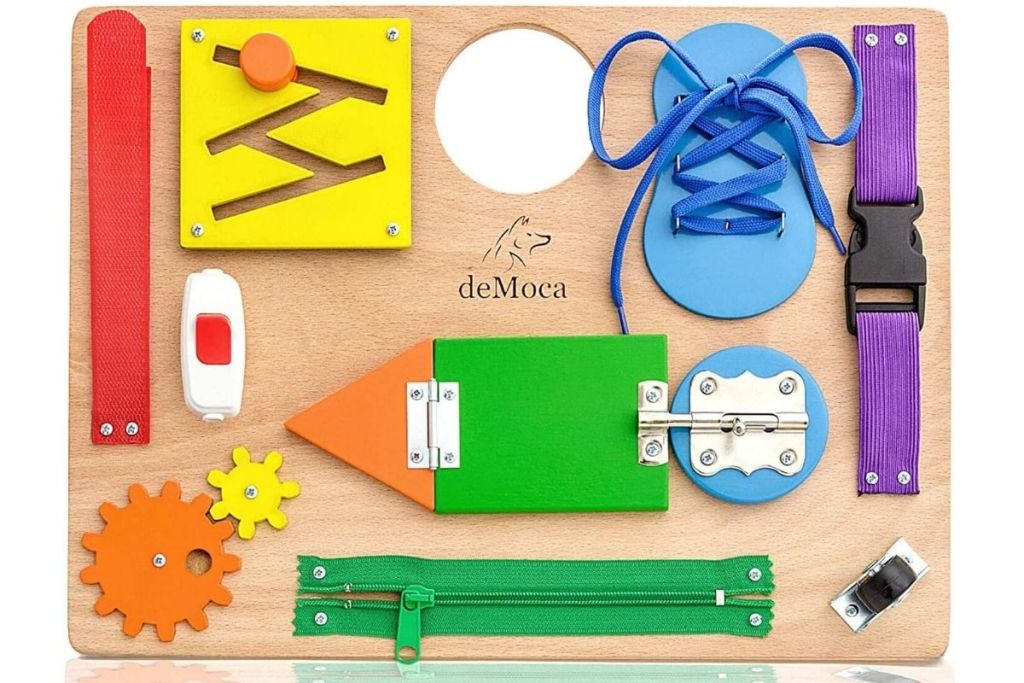Fine motor skills are incredibly important for toddlers’ development. Without them, they couldn’t feed themselves, brush their own teeth, dress themselves, play with their toys, or learn to write. Studies have shown that fine motor skills development positively influences language development, executive function, and other areas of brain development.
There are many fine motor activities for toddlers you can do at home together as well as toys you can get to help them with this development. Since fine motor activities are pretty much anything where toddlers use their hands, there are many options, but we’ve put together a helpful compilation of ideas for you.

Examples of fine motor skills for toddlers
The term motor skills refers to movement skills. Babies, toddlers, and children develop two kinds of motor skills: fine motor skills and gross motor skills. Fine motor skills involve using hands and fingers to make smaller movements and gross motor skills involve using larger muscles like legs to make larger movements.
Examples of fine motor skills for toddlers include:
- picking up and putting down objects
- clapping hands
- using fork and spoon
- feeding themselves finger foods
- washing hands
- shaking musical instruments
- rolling and making shapes with Play-Doh
- putting on shoes
- brushing teeth
- building towers of blocks and knocking them down
- picking up balls or other objects in motion
- turning doorknobs
- turning book pages
- putting pegs into holes
- zipping and unzipping clothing
- scribbling and painting
- folding paper
- taking toys apart and putting them back together
- using child scissors
- putting beads on a string
What activities strengthen fine motor skills?
Anything using your child’s hands will help them strengthen their fine motor skills, and there are many opportunities in everyday life to do this.
Many activities for toddlers to strengthen fine motor skills involve arts and crafts. If your toddler is holding a glue stick, a crayon, a hole puncher, safety scissors, a marker, a paintbrush, a pipe cleaner, or really holding anything they need to grasp, it is helping to develop their hand and finger muscles and their coordination. Let them finger paint or do any craft, and they will be having fun while developing fine motor skills.
Helping you with cooking is another great opportunity for toddlers to work on fine motor skills. They can use cookie cutters, stir with a large spoon, roll dough, or pour from one container to another. They can also set the table by placing silverware for grasping practice. You could even help them pour everyone’s water.
Doing puzzles or board games where you have pieces to move or dice to roll are also good fine motor skill activities.

Fine motor skills toys for toddlers
deMoca Montessori Busy Board
This compact toy packs a lot into an 8.5 by 2.2 inches board with 10 different activities perfect for developing fine motor skills including zipping, tying, and spinning. This board can be used for babies through preschoolers and is great for bringing on trips in the car or airplane.
Skoolzy Rainbow Counting Bears
Toddlers can use their hands or different tools to sort the 60 different colored bears into the corresponding colored cups. The game also helps with learning colors.
Ancaixin Carrots Harvest
This Montessori toy requires toddlers to understand depth when they place the wooden carrots into their corresponding holes. Putting the right carrot into the right hole helps with fine motor skills.
GEMEM Wooden Lacing Threading Toys
This wooden dog and wooden strawberry have holes in them for your toddler to weave a string through, letting them practice aiming an object into a hole. This is a perfect toy for fine motor skill practice and can also keep your toddler entertained while traveling or at a restaurant.
Max the Fine Motor Moose
Your toddler can use Max’s rings to practice sorting and placing. You can store the rings inside the moose in between play sessions.
Fine motor activities for toddlers: Everyday play
Fine motor skills practice using children’s thumbs, fingers, and hands to grasp, pinch, grab, pick up, and place. Work this into your daily life whenever you can by letting your child hold the book while you read it to them and turn the pages, click the button to turn on the fan, make their bed, and any other moments of independence you can think to add into your daily life. You’ll not only strengthen their hand muscles but build their self-confidence, too!



